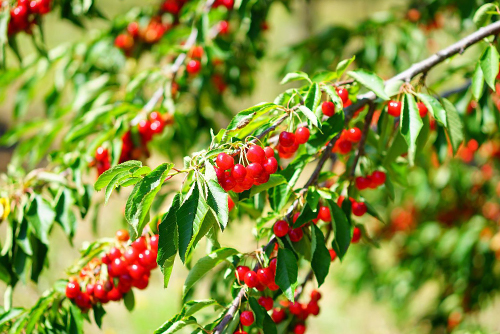
5 Best Fruit Trees to Grow
Avoid growing a hard to care for fruit tree, or one that won’t thrive in your hardiness zone. Knowing which fruit trees to grow will help you delight in a rewarding and bountiful annual harvest.
nannenarboretum.org gathered the following growing information and tips for 5 of the best fruit trees to plant on your proprty.
1. Apple Tree (Malus pumila)

Apple is a fruit-bearing tree whose leaves are simple and oval in shape. They have small serrations along the margin and are arranged alternately along the tree’s branches.
Soil – This species is known to tolerate a wide variety of soil types. However, preferred soils for apple trees are well-draining medium-clay to sandy loam, fertile soils with slightly acidic to neutral pH (between 5.8 and 6.5)
Water – Approximately 1 inch or so of weekly rainfall is adequate for most apple trees
Sun – Apple trees require at least 8 hours of sun per day during the growing season
Mature Size – 25-30 feet tall and a 25-foot spread
Pruning – Most apple tree species are pruned in winter, between November and early March, when the tree is dormant
Fruit – Two varieties are required for successful pollination, and most apple trees will only produce fruit 4 to 8 years after being planted
Hardiness Zone – Apple trees can thrive in zones 3 through 8 (depends on variety)
2. Avocado Tree (Persea americana)
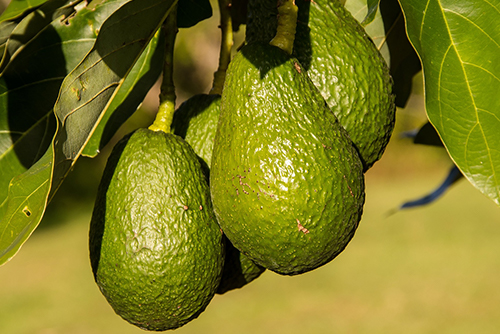
Avocado trees can be tall, spreading, or both. The tree has 4 to 12-inch elliptic to egg-shaped leaves. The tree’s small greenish flowers are borne in dense inflorescences and lack petals.
Soil – Avocado trees prefer well-draining soil with a pH from 6 to 6.5
Water – Due to shallow roots, newly planted trees will likely need watering two to three times per week during their first year. Mature avocado trees will need water equivalent to 2 inches of weekly rainfall or irrigation during the summer months
Sun – Avocado trees thrive in bright, direct sunlight. They need a minimum of six hours of daily sunlight but can tolerate slight shade
Mature Size – This fruit-bearing species will reach a height of 15 to 20 feet and a 5 to 8-foot spread
Pruning – The recommended time to prune this species is in spring (February to May) in order to encourage good regrowth
Fruit – An avocado tree will produce fruit 3 to 4 years after planting it as a sapling but only after 5 to 13 years when planted as a seed
Hardiness Zone – Avocados only thrive in zones 8 through 11
3. Cherry Tree (Prunus avium)
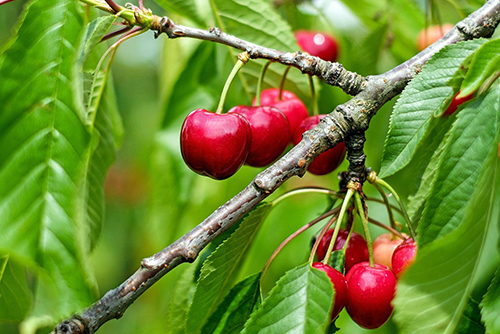
Cherry trees are large and upright, reaching mature heights of 36 feet. The fruit is a fleshy drupe generally heart-shaped, varying in color from yellow to red shades and nearly black.
Soil – This species requires well-drained fertile soil to thrive, and cherry trees are not typically sensitive to soil pH variations
Water – Cherry Trees flourish in moist soil. Subsequently, they need an inch of water every two weeks while they’re young
Sun – These trees need a minimum of six hours of daily sunlight
Mature Size – 35 feet tall and a 25-foot spread
Pruning – Early spring is the best period for pruning cherry trees
Fruit – Cherry trees produce fruit four to seven years after being planted
Hardiness Zone – Cherry trees thrive in zones 5 through 7
4. Dragon Fruit Tree (Selenicereus undatus)
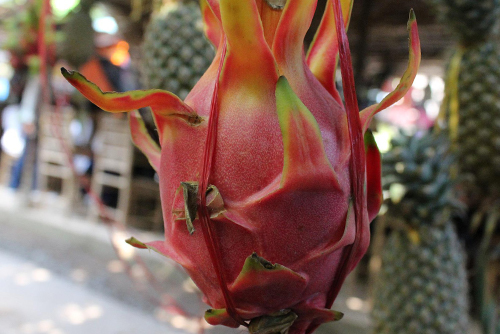
This plant is a climbing cactus vine that thrives in dry areas. Its flowers bloom only at night, with the plant sometimes referred to as moonflower or lady of the night.
Soil – This tree prefers growing in sandy, slightly acidic soil with a pH level between 6 and 7
Water – Even though it is a cactus, dragon fruit needs about an inch of water per week
Sun – These trees need a minimum of six hours of daily sunlight
Mature Size – 5 to 10 feet tall and a 10-foot spread
Pruning – For best results, this species should not be pruned until it is one year old and not until it has had one full flowering and fruiting season
Fruit – Dragon fruit trees bear fruit for five months each year, usually from early summer through mid-fall
Hardiness Zone – This species thrives in zones 9 through 11
5. Lemon Tree (Citrus limon)
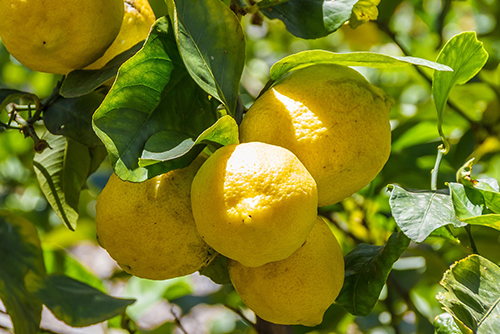
This species forms an evergreen spreading bush or small tree, 10–20 feet high if not pruned. Its young oval leaves have a reddish tint, later turning green.
Soil – Lemon tree species grow best in loamy or sandy loam soils. Lemons prefer soil pH levels between 5.5 and 6.5
Water – Water young lemon trees every four to five days during dry periods. Mature lemon trees only require water about every seven to 14 days
Sun – Lemon trees require at least 6 hours of daily sun but will thrive in up to 8 hours
Mature Size – 10 to 20 feet tall
Pruning – Ideally, you should prune lemon trees in late winter or early spring
Fruit – Lemon trees can take 3 to 6 years before bearing fruit
Hardiness Zone – The species is best suited for zones 9 through 11
Growing Fruit Trees
In this article, you discovered growing information, tips, and recommendations for several popular fruit tree species.
By planting fruit trees in your yard, you diversify your landscape and give yourself the opportunity to indulge in fresh fruits as they are harvested.
Not planting fruit trees on your property will leave you dependent on store-bought fruits and whatever chemicals were used to grow, transport, and ripen them.
Sources:
extension.umn.edu/fruit/growing-apples
gardeningsolutions.ifas.ufl.edu/plants/edibles/vegetables/avocados.html
hortnews.extension.iastate.edu/2008/2-6/Cherries.html
uog.edu/_resources/files/extension/publications/Dragon_Fruit.pdf
extension.uga.edu/publications/detail.html?number=B804&title=Citrus%20Fruit%20for%20Southern%20and%20Coastal%20Georgia